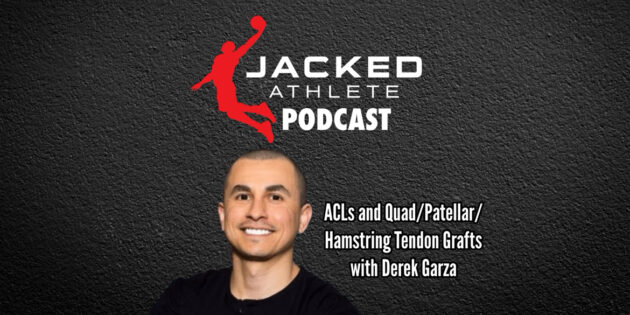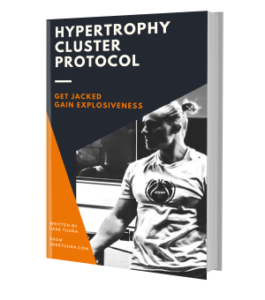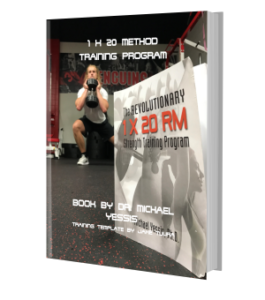https://podcasts.apple.com/us/podcast/jacked-athlete-podcast/id1462537296?i=1000706016903
“I try to encourage people, hey, take the time. If you have the time, take the time. ⁓ When you’re looking at anything less than nine months for a return, you’re looking at like a seven times increase of a re-injury.”
“So with the autograph, there’s going to be weakening in that structure. So they’re going to harvest it, it’s going to weaken within the first six weeks. In the 6 to 12 weeks, it’s going to further weaken. So usually when they start looking at return to run, it’s somewhere around the 12 week mark of, hey, this is when we’re doing more dynamic stuff. But that’s actually when the graph is at its weakest point, which is a really delicate time of really introducing what the strengthening looks like and what the plyometrics and return to run stuff looks like. So it’s weakening. The revascularization is happening. But the collagen organization is poor. And then it really starts revascularizing and remodeling at about three to six months.”
“Why do I think that within nine months, these tears are happening at such a high rate? Well, it’s because it’s still going through the healing process.”
“There’s a lot of like mechanoreceptors within the ACL itself… And in terms of the awareness of where the joint is in space and time, there needs to be like thousands of repetitions that you’re looking at in terms of, hey, how am I moving? What does this look like in terms of impact loading, shear forces, tensile forces, all of that? And I just don’t think that there’s enough time to practice and really get that in.”
Tendon grafts: “So it’s going through a ligamentation process where the structures between a tendon and a ligament are slightly different. So it needs to kind of change its function altogether, where you have your tendon where it’s going from muscle ⁓ and transmitting force into bone, where you just have this other thing that is helping to protect the joint. It’s providing more joint stability.
“When I get somebody really early on for ACL, honestly, I want to see them post-op like day one. Typically, you can see them within the first week, and that’s fine. But the earlier I can get somebody in there, the better, just because of the patient education side.”
Primary goals early on: “trying to get knee extension back as quick as we can, similar to the contralateral side, like almost identical if possible. And then quad function. Quad’s going to lag. So reps on reps on reps. Trying to get that quad back.”
Full knee extension: “If I’m lagging on that side, just there’s no way that my quad is going to get to that full contraction.”
“So when you have swelling in that knee joint, what’s going to happen is you’re going to impact how that quad’s going to fire. So trying to get rid of as much swelling as possible ⁓ to really help that out.”
I think there’s a lack of understanding there. I think people really don’t know what AMI is and how it pertains to that athlete.
Decreasing swelling: “If it’s in person, massage, ice, compression boots have that foot elevated. sometimes we’ve got them locked in a brace to make sure that they’re not sleeping in extension. So yeah, you’re sleeping with that brace. It’s at zero. ⁓ Yeah, we’re elevating that leg. So all of the typical things that you would do to try and get swelling out of the area. But I think overall that makes a huge difference ⁓ in getting the swelling down.”
“Sometimes that quad is so weak that what you’re going to have happen when the person is trying to execute and tighten up that quad to get full knee extension is that hamstring can kick on and almost give you the opposite effect, where it’s going to pull you into knee flexion instead of help you in knee extension.”
Quad tendon grafts: “Just the weakness. The weakness lasts longer than the other two… the quad’s going to lag, and it’s just not going to feel as strong.”
“Patellar grafts, that’s the gold standard graph, really. So the failure rate for that is pretty low. It’s robust because it has that whole bone plug and bone healing. It’s faster than other soft tissue graphs. It’s often used in young athletes. It’s pretty solid for knee stability. But then, of course, your kind of factors and things that you have to kind of weigh out is how do they handle deceleration? How do they handle ranges in between roughly around like 60 to 90 degrees? ⁓ What is their history with patellar tendinopathy? And are they going to be prone to that patellar fracture?”
Post patellar graft: “I’ve seen this pop up more times than I’d like, where you’ll get an athlete and everything looks pretty solid from a strength perspective. Everything is healing great. And then, cool, we’re just going to work on a bunch of deceleration. And they kind of just flare up and then clears and then flare up and then clears and then flare up. And you sit back and you watch and you’re just like, what is happening that that’s a constant situation? So I don’t love that aspect of it. ⁓ That’s where I take a little bit more pride in how you can program and build out your plyometric programming because I think that part’s important. And I think that can actually end up saving the athlete.”
“One of the big things that you’ll find is we want your limb symmetry index to be 90 % ⁓ as far as building up some strength. But cool, you can still have two flat tires that have the same tire pressure. They’re still flat.”
“I try to make things non-events. Like jumping is a pretty big milestone, returning to run is a pretty big milestone, but I try to make them not that. Just because anxiety and stress and pressure and everything. Usually what I’ll do is I’ll go through a typical strength progression, right? Like a really hard strength day. And then at the very end of it, you know, if they’re feeling pretty good and I’m pretty comfortable with where we’re at, like, hey, give me 10 Pogos on the spot. Give me 10 Pogos forward, backwards, side to side. OK, cool. Now go home. By then, they’re already warmed up. They’re in a strength program that they’re already used to. None of the variables change except for that last little two minute thing at the end, ⁓ as opposed to I’ve had people come in and they’re feeling pretty good. And I have them do plyos. And then there’s a flare up. Or then there’s pain. And then now I just ruined my whole session. Or they came in with the anticipation of that and they’re nervous. So now the movement quality is kind of all over the place because of the nervousness.”
Traditional ACL rehab: “It’s weak people teaching weak concepts and getting weak results. Let’s call a spade of spade. That’s kind of what it is.”
“The 3 x 10s are cool until you can’t get your quad to load, or until you can’t get your quad to activate… Some of these protocols are still 3 x 10. I’m in the hundreds pushing towards 1,000 quad sets, like straight leg rate. Anything related to that quad activating, and this is per day.”
“If we’re looking at step counters and saying, I reach my 10,000 steps today, 5,000 of those were done on your single leg. Your 3 x 10 is a drop in the bucket. What’s that going to do for somebody who really needs to get back to their sport? Nothing. Not a damn thing.”
“I think people are more comfortable with running than they are plyos, so they shy away from plyos. And I’ve seen protocols before where they put return to run before they do plyometrics, which doesn’t make any sense at all. So your return to run’s at three months and your return to plyometrics is at seven or eight months? What?”
“I think it’s very common that you’re going to see a hip strategy versus a knee strategy. People just don’t like to load into the knee. I don’t care what graft it is. They’re going to shy away from it. They had the injury there. It’s not something they’re comfortable with.”
“When you’re looking at single hop for distance, triple hop for distance, crossover hop for distance, six meter timed hop, I think you can miss those things [hip strategies]. It’s like, cool, they got the distance. Cool, they got the time frame. But what was their strategy to do it? How did that look? It still looks like crap on that side. Now we’re back to having two flat tires, right? Where you hit your numbers, cool, but the movement strategies weren’t very good.”
“There’s this tendency to move toward we need more hip strengthening versus quad and moving through the actual knee… and when the re-injury rates and everything else are as bad as they are, I think we are missing something as a field.”
Education on plyometrics in physical therapy school: “Large and resounding no.”
“I think when people think of return to run, it’s typically like your 5k, your 10k and I think it’s your pretty typical stuff. But I don’t think it’s anything that super moves the needle on like, we’re getting this person faster. Again, I think some clinicians are pretty good at it. Do I think that the field is good at it? Not particularly, no.”
“I think that there needs to be a greater emphasis on getting the basics down in the beginning. So extension, getting rid of swelling, and then getting quad function back immediately and bump up the reps… Actually strength train this person, like work into the heavy weight, work into it, like learn plyometrics, go find somebody, learn from them, get some of the movement qualities down, get more comfortable doing that. You don’t have to be a magician. Just at least learn some of the basic movement quality so that you can actually have an eye for it and help.”
Derek on Instagram: https://www.instagram.com/dr.derekpt/
Derek’s Linktree: https://linktr.ee/drderekgarza?fbclid=PAZXh0bgNhZW0CMTEAAafGwPFbijuM4jTC0YjCcgMH2cY3-masDnDR00SYM7QCAyHfVaMUxWiB4ij1GQ_aem_Yj9twOyX7Rp7Un4fBhKFGg



